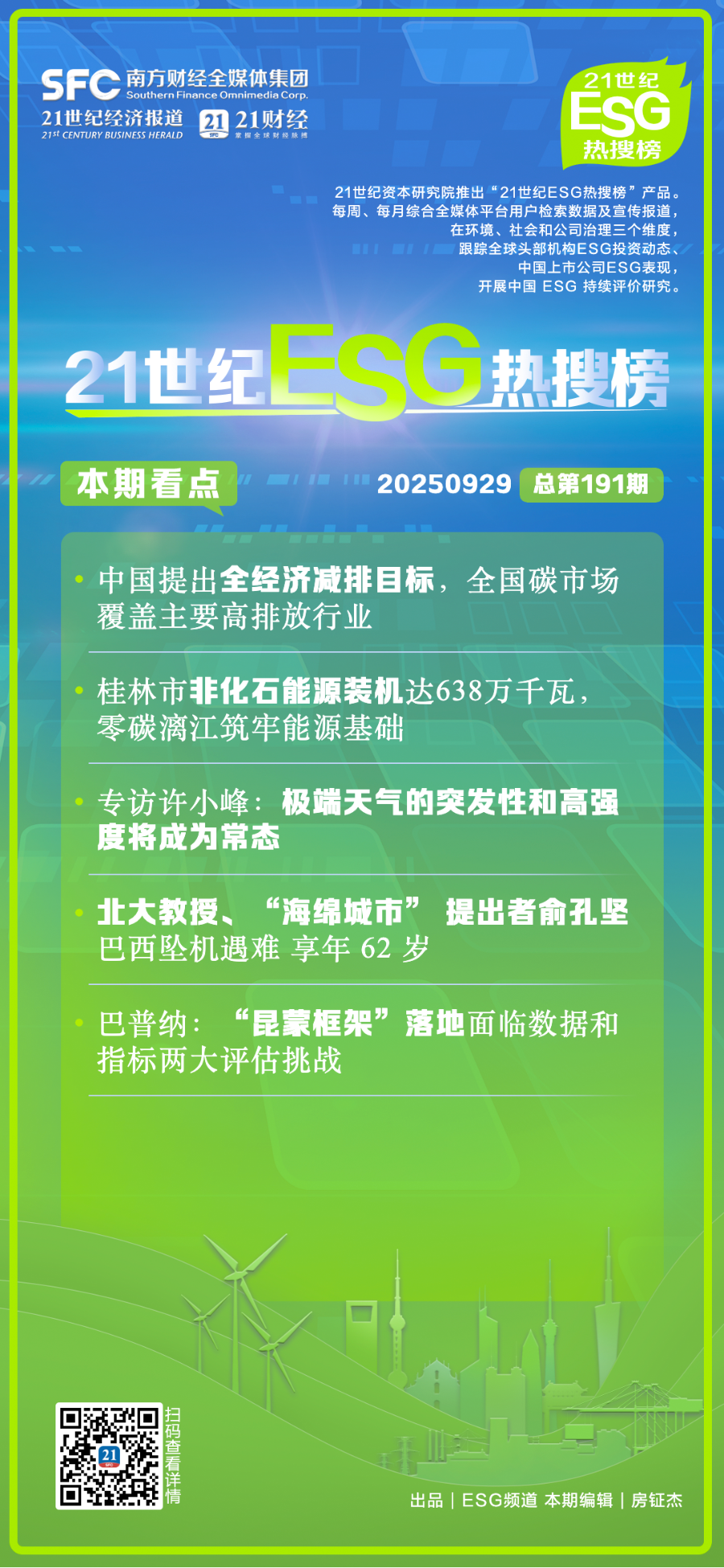China Proposes Economy-Wide Emission Reduction Targets, National Carbon Market to Cover Major High-Emission Industries
At the UN Climate Summit, China announced its new round of nationally determined contributions: by 2035, China aims to reduce economy-wide net greenhouse gas emissions by 7%-10% from peak levels, striving to do even better. The share of non-fossil energy in total energy consumption will reach over 30%, with total installed capacity of wind and solar power reaching more than six times the 2020 level, targeting 3.6 billion kilowatts. Forest stock volume will exceed 24 billion cubic meters, new energy vehicles will become mainstream in new vehicle sales, the national carbon emissions trading market will cover major high-emission industries, and a climate-resilient society will be basically established.
Guilin’s Non-Fossil Energy Capacity Reaches 6.38 Million Kilowatts, Building Energy Foundation for Zero-Carbon Li River
As part of the pre-launch promotion for COP30 China Pavilion, the 2025 “Low-Carbon China Tour” and Climate Action Week series of events were recently held in Guilin. The event revealed that the city’s non-fossil energy installed capacity has reached 6.38 million kilowatts, accounting for 87.7% of total capacity, laying the energy foundation for the near-zero carbon demonstration zone in the Li River core scenic area. A ring network centered on the 500 kV North Guilin Station ensures the absorption of wind power from North Guilin, while the Winter Field energy storage station and the Guanyang pumped storage project enable flexible energy dispatch. The region’s first electricity-carbon monitoring platform and zero-carbon virtual power plant provide digital carbon bills to 14,000 users through a “carbon-electricity source tracking” system. In converting ecological value to economic value, a green electricity alliance was formed with over 60 organizations, creating a tripartite green electricity trading model that achieves full coverage of “zero-carbon villages” on Dahebei Island. The conversion of 1,200 bamboo rafts from diesel to electric power reduces carbon emissions by 2,493 tons annually, establishing an “electricity + tourism” model as a world-class zero-carbon template for scenic areas.
Extreme Weather’s Suddenness and High Intensity Will Become the Norm
At the Climate Economy Forum, it was pointed out that this year’s rain-heat differentiation in North China represents a rare anomaly, but the suddenness and high intensity of extreme weather will become the norm, rooted in increased atmospheric volatility causing instability in subtropical high activities.
Mountain disaster prevention remains a significant weakness, with northern regions being more vulnerable due to sparse vegetation and weaker public awareness. Flash flood warnings have only a 1-2 hour window, necessitating the promotion of emergency broadcasting, relocation of at-risk housing, and learning from southern China’s disaster response exercises. Regarding climate response, while warming is reversible, frequent extreme events in the short term require equal emphasis on “mitigation + adaptation.” Weather forecasts can predict renewable energy output 72 hours in advance, with supporting energy storage to smooth fluctuations. Climate resilience building should prioritize rural disaster prevention before advancing urban transformation and developing new sponge cities.
Typhoon Expected to Affect Southern China During National Day Holiday
At the October meteorological briefing, it was stated that following Typhoon “Huajiasha,” Typhoon “Boroi” passed south of Hainan Island this afternoon, bringing strong winds and rain to Hainan and southern Guangdong and Guangxi. As the National Day holiday approaches, another typhoon is expected to affect southern China. Forecasts indicate that in October, 4-6 tropical cyclones (with center winds ≥ level 8) will form in the Northwest Pacific and South China Sea, more than the usual average (3.5), with 1-2 making landfall or significantly affecting China.
2025 China ESG Management System Conference Held in Beijing
The 2025 China ESG Management System Conference with the theme “Parallel Development of Concepts and Practice, Coexistence of Development and Quality” was held in Beijing. The conference emphasized that ESG highly aligns with China’s new development philosophy of “innovation, coordination, green development, openness, and sharing,” serving as an important tool for achieving carbon peak and carbon neutrality goals and advancing ecological civilization construction, while also being a key support for enhancing corporate governance capabilities and international competitiveness.</p





